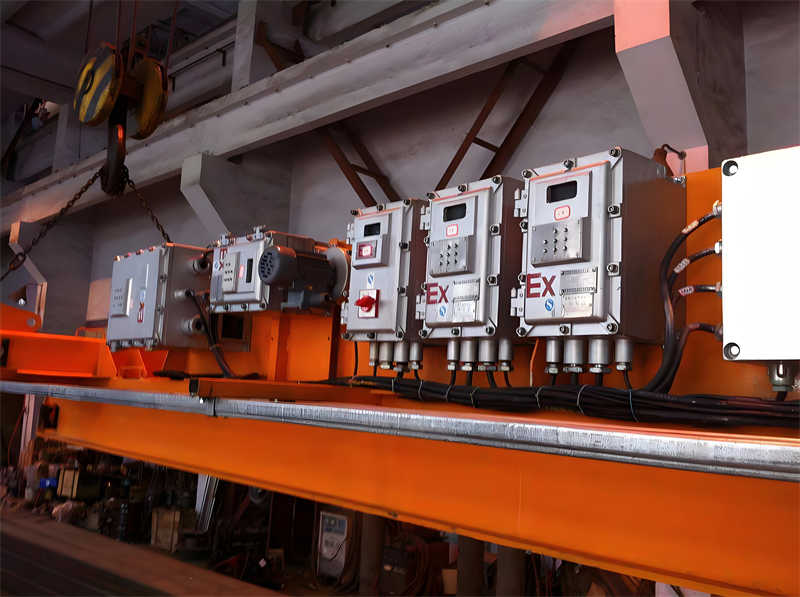ATEX vs IECEx Explosion-Proof Cranes: A Practical Guide for Chemical Plants (2025)
Introduction: Why Certification Matters in Hazardous Environments
In March 2024, a chemical plant in Germany faced an €8.3 million fine after an improperly certified crane nearly caused a catastrophic incident in a hydrogen processing area. This highlights a critical reality: in explosive environments, crane certification isn’t just compliance—it’s a fundamental safety requirement.
For plant managers and procurement teams, choosing between ATEX and IECEx certifications can be complex. This guide provides:
- Key differences between ATEX and IECEx standards
- How to select the right crane for chemical plant environments
- 2025 updates to explosion-proof regulations
- Practical considerations for procurement and maintenance

Section 1: ATEX vs IECEx – Understanding the Standards
1.1 Legal Status and Geographic Application
| Standard | Governing Body | Primary Regions | Legal Requirement |
|---|---|---|---|
| ATEX | European Union | EU/EEA | Mandatory (Official ATEX Directive) |
| IECEx | International Electrotechnical Commission | Middle East, Asia, Australia | Often required by contracts (IECEx Official Site) |
| NEC (NFPA 70) | National Fire Protection Association | North America | Mandatory (NFPA 70 Standard) |
Key Insight: While ATEX is mandatory in Europe, many global operators (e.g., Saudi Aramco) require IECEx certification, even for EU-made equipment.
1.2 Certification Processes Compared
ATEX Directive 2014/34/EU:
- Self-certification allowed for Category 3 equipment
- Notified Body review required for Categories 1 & 2
- Typical certification time: 8-12 weeks
IECEx System:
- Mandatory third-party testing by an ExCB (Certification Body)
- Annual factory audits required
- Typical certification time: 14-18 weeks
2025 Update: IECEx now requires QR-coded certificates for quick verification.
1.3 Marking Systems Explained
ATEX Example: II 2G Ex db IIC T4 Gb
- II: Equipment group (surface industries)
- 2G: Category 2, Gas atmosphere
- Ex db: Flameproof + increased safety
- IIC: Gas group (hydrogen)
- T4: Temperature class (≤135°C)
IECEx Example: Ex db IIC T4 Gb
- Nearly identical technical requirements
- No EU-specific categorization
Recommendation: If operating in multiple regions, dual-certified cranes simplify compliance.
Section 2: Key Selection Criteria for Chemical Plants
2.1 Chemical Resistance & Material Selection
| Chemical Exposure | Recommended Material |
|---|---|
| Sulfuric acid (>80%) | Hastelloy C-276 |
| Chlorine gas | Titanium-clad steel |
| Ammonia solutions | Epoxy-coated carbon steel |
| Saltwater environments | 316L stainless steel |
Maintenance Tip: Regular inspections for corrosion or coating wear are critical in aggressive chemical environments.
2.2 Smart Monitoring & Safety Features
Modern explosion-proof cranes often include:
- Gas detection sensors (auto-shutdown at 20% LEL)
- Temperature monitoring (prevents overheating)
- Vibration sensors (predict bearing failures)
Best Practice: Ensure monitoring systems are intrinsically safe (Ex i) to avoid additional ignition risks.
Section 3: Cost Considerations & ROI
3.1 Total Cost of Ownership (TCO) Comparison
| Cost Factor | ATEX/IECEx Crane | Non-Certified Crane |
|---|---|---|
| Initial Purchase | €80,000–€100,000 | €50,000–€70,000 |
| 5-Year Maintenance | €10,000–€15,000 | €30,000–€50,000 |
| Regulatory Fines Risk | Low | High (€200K–€1M+) |
| 10-Year TCO | €120K–€150K | €200K–€500K+ |
Key Takeaway: While certified cranes have higher upfront costs, they reduce long-term risks and expenses.
3.2 Ways to Optimize Costs
- Consider refurbished certified cranes (40–50% cost savings)
- Modular upgrades (start with Zone 2, expand later)
- Preventive maintenance plans (reduce downtime)
Section 4: A Step-by-Step Procurement Guide
Step 1: Hazard Assessment
- Identify chemicals present (SDS review)
- Map hazardous zones (Zone 0/1/2)
- Use tools like the IECEx Zone Classification Guide (Link)
Step 2: Technical Specifications
- Required protection type (Ex d, Ex e, etc.)
- Temperature class (based on chemical autoignition points)
- Material compatibility (acid resistance, corrosion protection)
Step 3: Supplier Evaluation
Ask potential suppliers:
- Can you provide test reports for my specific gas group?
- Do you offer dual ATEX/IECEx certification?
- What is your mean time between failures (MTBF) in similar plants?
Step 4: Installation & Compliance
- Ensure proper grounding to prevent static sparks
- Train operators on safe handling in Ex zones
- Maintain certification documentation for audits
Section 5: Future Trends in Explosion-Proof Cranes
5.1 2025 Regulatory Updates
- IECEx: New requirements for cable gland sealing
- ATEX: Stricter dust explosion (Ex tD) rules
5.2 Emerging Technologies
- AI-driven predictive maintenance (reducing unplanned downtime)
- Hydrogen-ready designs (for future energy applications)
Recommendation: When purchasing, consider upgradeability for future standards.
Conclusion & Next Steps
Key Takeaways:
- ATEX = EU compliance, IECEx = global flexibility
- Material selection is as critical as Ex rating
- Certified cranes lower long-term costs
Recommended Actions:
📥 Download a free Explosion-Proof Crane Checklist
📞 Consult with a hazardous area lifting specialist
🔍 Verify supplier certifications via IECEx Certified Equipment Database
